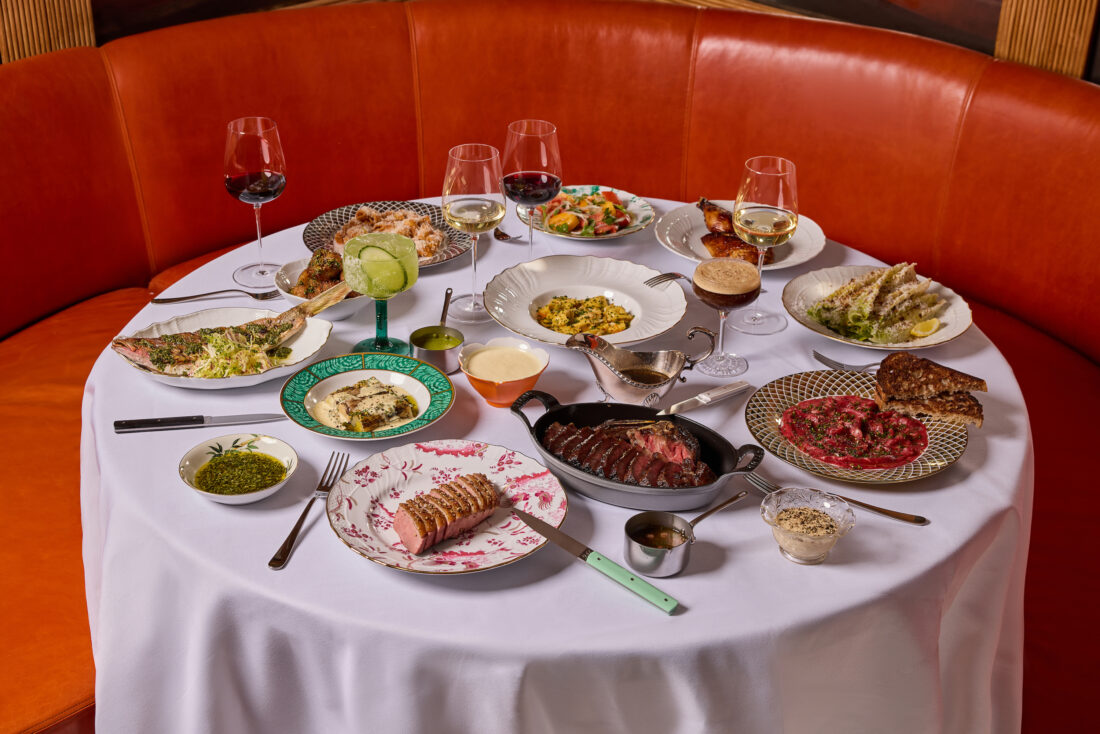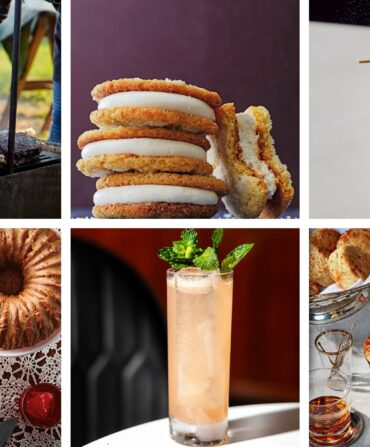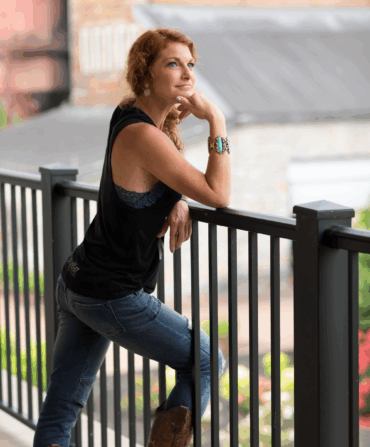“Diners enjoyed their meals by candlelight, romantic, but not entirely practical,” a Miami Herald journalist wrote of the early days of Black Caesar’s Forge, an iconic midcentury South Florida steakhouse. Ninety years ago, give or take, J. Marquette Phillips started throwing dinner parties in his home and iron workshop on Cutler Bay. A decorative welder, Miami Beach club owner, and skilled skirter of prohibition, Phillips welcomed the city’s elite to a sunken dining room carved from coral rock; his cellar was stocked with fine wines. In 1938, he opened up the space to the public, with guests at first bringing their own steaks and salad fixings, which Phillips’s staff prepared for a fee. Electric power had not yet reached that remote stretch of southern Dade County, hence the finicky lighting.
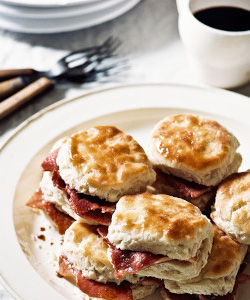
A certain amount of amnesia, according to historian Andrew K. Frank, is coded into the DNA of Miami, a paradise seemingly built from scratch. To wit, in 1897, Henry Flagler raised Tequesta tribal mounds to make way for his glamorous Royal Palm Hotel; a Whole Foods now sits on the resort’s original site. Between 2018 and 2023, the city demolished some 860 properties, including an architecturally significant hotel famous for hosting the Beatles.
But Miami has history, ancient and aplenty, and sometimes the past echoes into the present—at dinner.
In early 2022, my husband and I visited Sunny’s Someday Steakhouse, a pandemic-born sorta-restaurant in Miami’s Little River neighborhood. We sat in an open lot of a roofing factory turned alfresco dining room, at a white linen–draped table arranged just so around a banyan tree. We threw the ice left over from our martini shakers into the bushes. We slurped raw oysters with pineapple-habanero mignonette. I fed tender bits of hanger steak to our elderly French bulldog, close at our heels. String lights and tiki torches illuminated the night. Romantic, yes, but not entirely practical. When the inevitable Miami rainstorm began, we had to duck under a makeshift awning.
No, Sunny’s would not do, not forever. That spring, owner Will Thompson and chef-partner Carey Hynes closed the restaurant; diners mourned the celebrations they would not have, the steakhouse the city actually needed. But Thompson had plans for a comeback, and now, two and a half years later, Sunny’s has reopened on the same patch of earth and with the banyan still standing. “The effort here, most importantly, has been to retain that feeling we had,” Thompson says, “while adding infrastructure, so when that rain comes, it’s not quite so devastating.”
That means a stylish indoor space in case of inclement weather—and for its seasoned staff and eager guests, a sense of permanence.
I had not quite realized what a feat the original Sunny’s had been. The kitchen, Thompson joked, was little more than a few bent pieces of metal and mosquito netting. They used squirt guns to douse flames when they rose too high from the grill. The restaurant operated with a circus permit. “You know how the circus comes to town, and they do things like cook food and serve beverages? We literally used the same permit as the circus to get by,” Thompson explains. “It’s a level of irony I can’t really handle.”
J. Marquette Phillips successfully petitioned the city to build a power plant on Cutler Bay; Thompson convinced his landlord to bring in power, gas, and water to the lot. They ripped up the road to lay pipe. They built a gleaming kitchen, a lucky-thirteen-seat bar, and two dining rooms that look as if they’ve always been there.
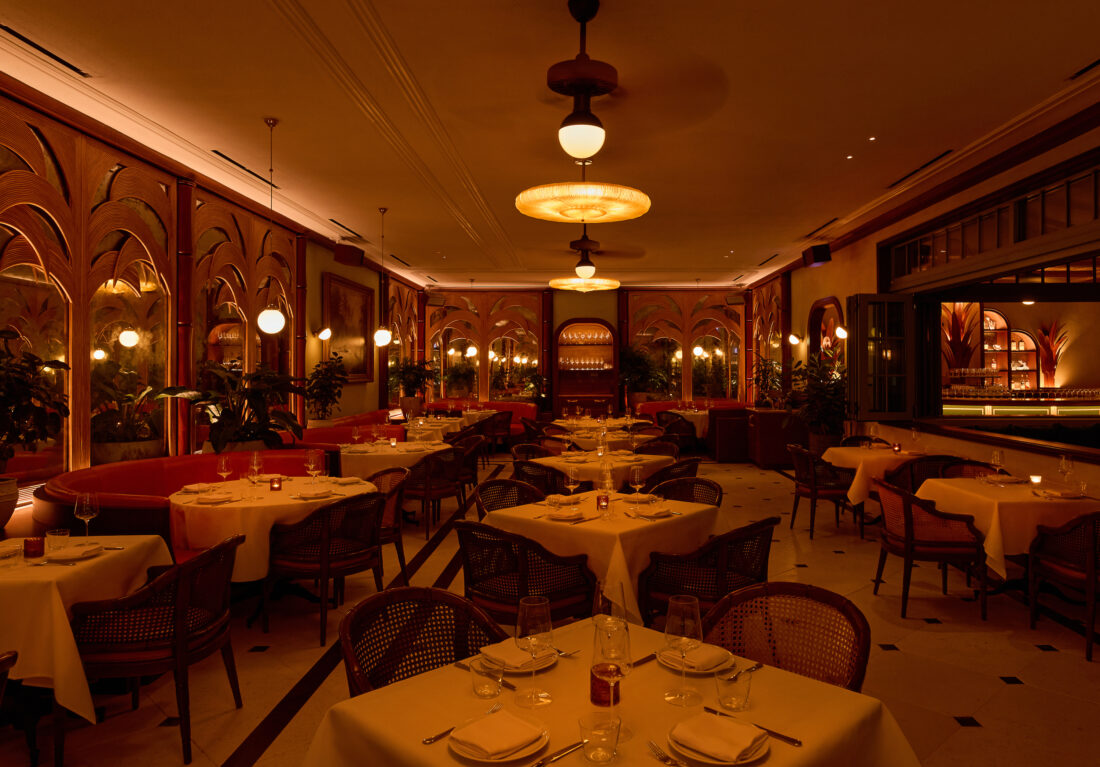
Phillips sold his stake in his nightclub the Forge to run his own restaurant. Thompson and Hynes closed their award-winning bar, Jaguar Sun, to fully focus on Sunny’s—to give it a shot at becoming a Miami institution. “We’re trying to do something that feels like it’s gonna be around for a while,” Thompson says. “I’m not sure a lot of restaurants like that get to open, let alone in Miami.”
Walking back into Sunny’s the last week of September was like seeing an old friend, one who’s grown up but has all the same spirit. I tucked into a nondescript doorway, on a quiet industrial street, and an expanse of palms and twinkle lights greeted me. I ordered a fino martini—with gin, clarified passion fruit, and fino sherry—at the outdoor bar, and the chilled glass dripped with condensation.
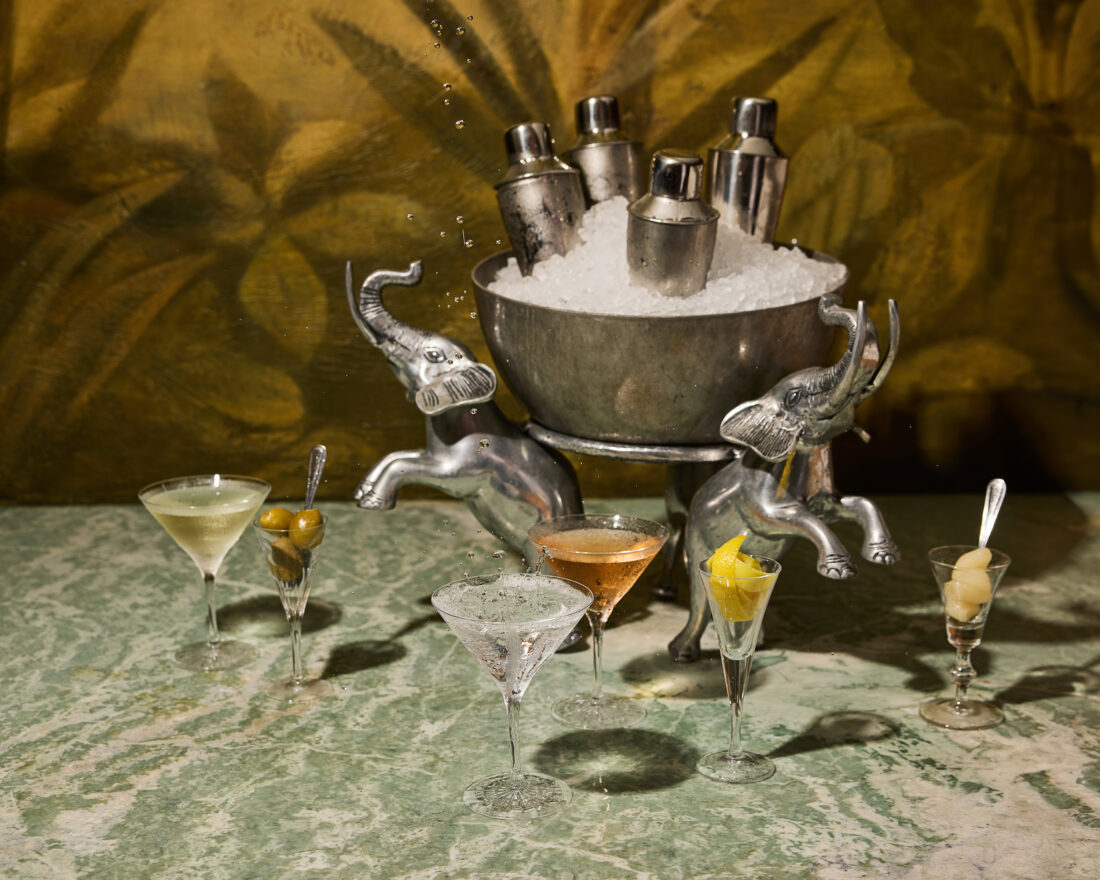
Sunny’s still offers alfresco seating, some three thousand square feet of it, ideal for Miami’s less oppressive months, happy hours with snacks, and casual dinners with well-behaved children and dogs. The dining rooms, too, will open to the outdoors in good weather. Your hair may curl with the humidity and your skin may take on a Miami glow, but I promise, you’ll still look fabulous tucking into dishes while framed by gilt palm mirrors and leaning back into a red leather banquette, cocktail in hand.
Thompson and Hynes’s backyard dinner party is now dressed up in America’s grand steakhouse tradition—if it were planted in the tropics with a Palm Beach Regency interior. Designer Amy Butchko installed golden travertine floors and lush foliage. While J. Marquette Phillips alluded to Miami’s history with his restaurant’s namesake pirate (one who purportedly terrorized the Keys), at Sunny’s, the city’s past is on subtler display. The cocktail bar sports midcentury modern lines and pineapple fronds growing from the back bar. That ubiquitous symbol of hospitality was one of Dade County’s first significant crops. Erika Langstroth composed a wraparound mural of the Everglades in the style of nineteenth-century German artist Herman Herzog. Thompson also secured original pieces from the Florida Highwaymen, a group of Black artists who painted vibrant Florida landscapes from the 1950s to 1980s.
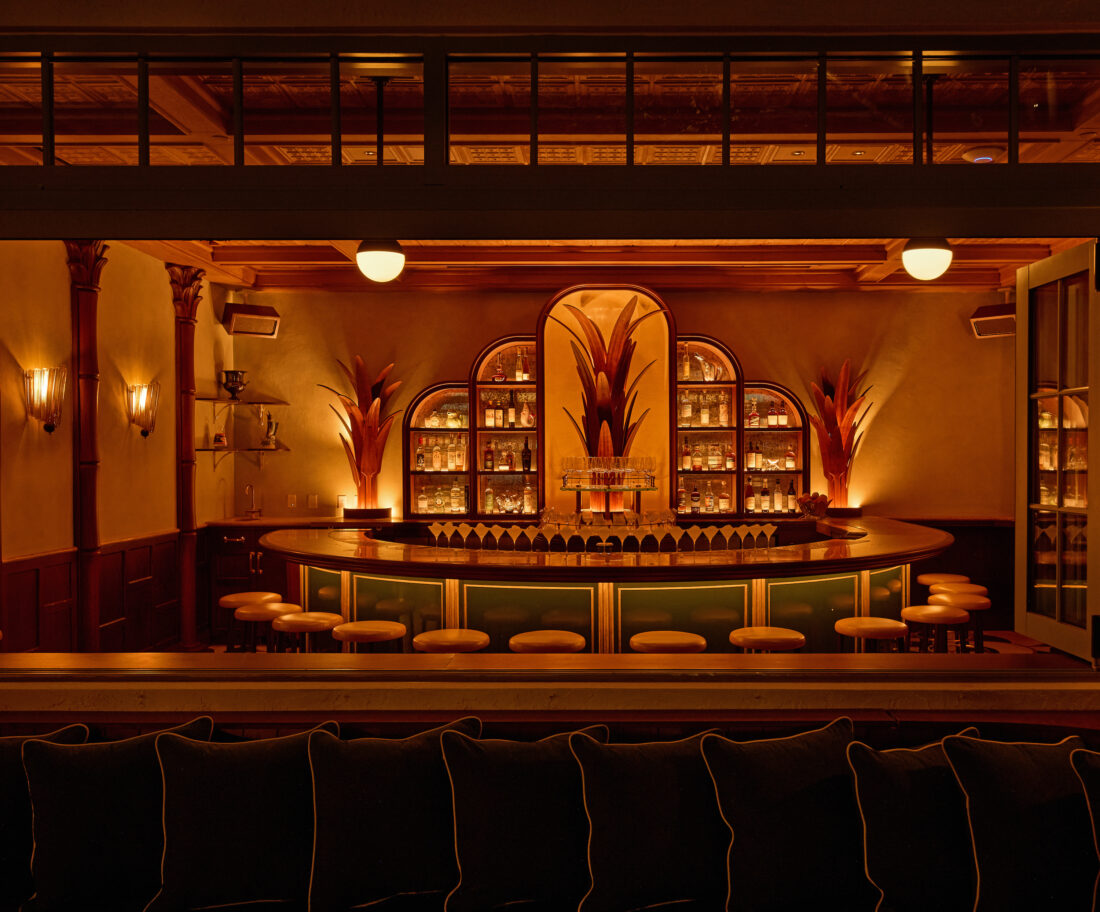
Sunny’s is a steakhouse, now with a longer menu, but beef is not a foregone conclusion. I suggest piling oysters and crudos on the table—especially a raw scallop number bathing in black aguachile. Sunny’s towering Caesar salad and Parker House rolls have returned from the original iteration, and Hynes has brought over his pasta program from Jaguar Sun. Sweet corn agnolotti offers a pop of summer dressed in crab and saffron, and toothsome chitarra with mushrooms and sherry reminded me of a vintage stroganoff. A generous, spicy jerk pork chop and a whole yellowtail snapper with a snappy caper vinaigrette plant the menu firmly in South Florida.
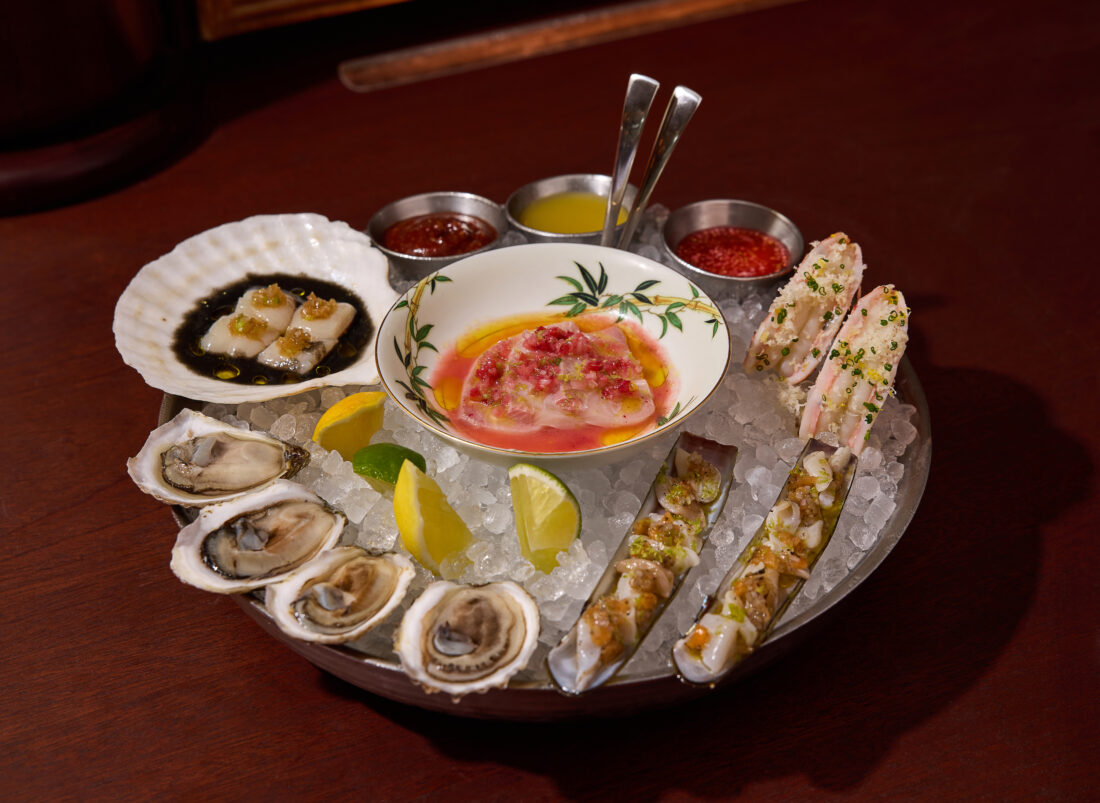
But do order a steak. There’s the affordable hanger, perfect for a weeknight, or a thirty-ounce Australian wagyu ribeye if you’re rolling deep. All the cuts go with all the sauces, some seven of them: salsa verde, classic béarnaise, bone marrow vinaigrette, Chinese-inspired XO, truffle-and-Madeira-laced sauce Périgourdine, pineapple hot sauce, and potato butter. The last two are my favorites. I’m a hot sauce fiend, and when I swirled a bite of beef into Hynes’s potato butter, childhood memories of New York strips and twice-baked potatoes flashed. However you stack your table, the spread will be served on swoon-worthy cream and gold Ginori plates, plus a charming assortment of thrifted china, an aesthetic holdover from Sunny’s 1.0 (minus the chips).

Thompson comes from the bar world, a sensibility that courses through the restaurant. I drank various martini riffs while my dinner companion sipped a guava cosmo and a spicy watermelon margarita, the latter aptly named the Circus Permit. There’s a $38 mezcal service and plenty of Champagne—but also a $5 Miller Lite.
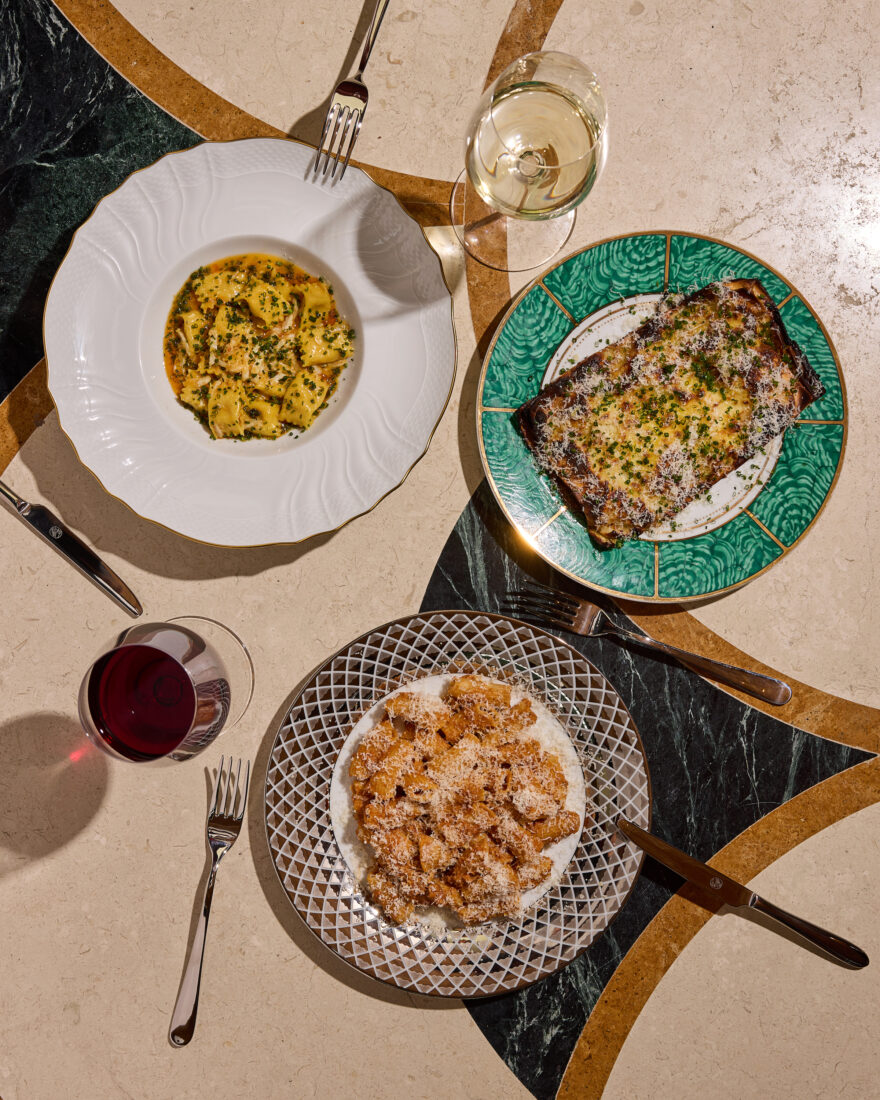
“Bars are democratic,” Thompson says. “Bars are egalitarian. Everybody gets to have a good time. The price of admission is whatever drink. For us to be successful in Miami, we have to hang on to that, because if we prioritize the 1 percent and push everybody else out, you end up with nobody.”
At Black Caesar’s Forge, Phillips hosted the likes of Harry Truman, Clark Gable, Richard Nixon, and Robert Frost. And airmen, returning from WWII. Young families. Coral Gables socialites. Tourists smart enough to leave South Beach for the night. Thompson wants something like that too—a dazzling but approachable, only-in-Miami kind of clubhouse for real people, who live in his adopted city. He also knows what he does not want: a cynical, velvet-roped club-staurant of the sort that has opened at an increasing clip since the pandemic. “New Yorkers love it for three to six months, and then they leave,” he says. “That’s the tale as old as time.”
No, with Sunny’s, Thompson is more interested in who and what is left after the season ends—how deep the roots of his restaurant and its banyan can grow in an old city obsessed with the new.
Some restaurants you can’t resurrect. I’ll never stand by the stone fireplace at Black Caesar’s Forge with a cocktail, drinking in an older, wilder Miami. There’s a multimillion-dollar home on the property now. But Sunny’s did come back. And, sometimes, when you invite people over for a dinner party, in a less than an ideal setting, you create something magical, timeless, built to last.


